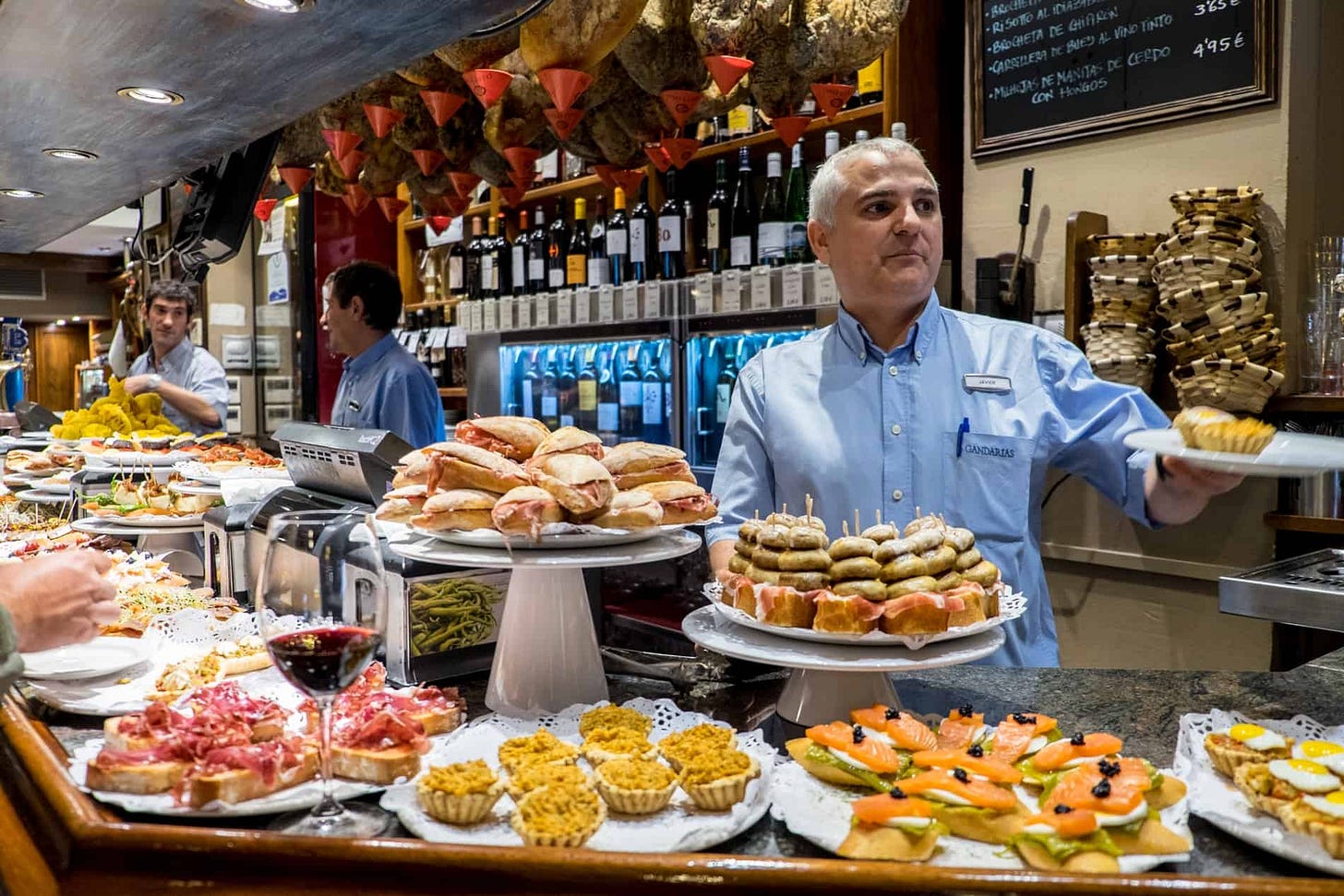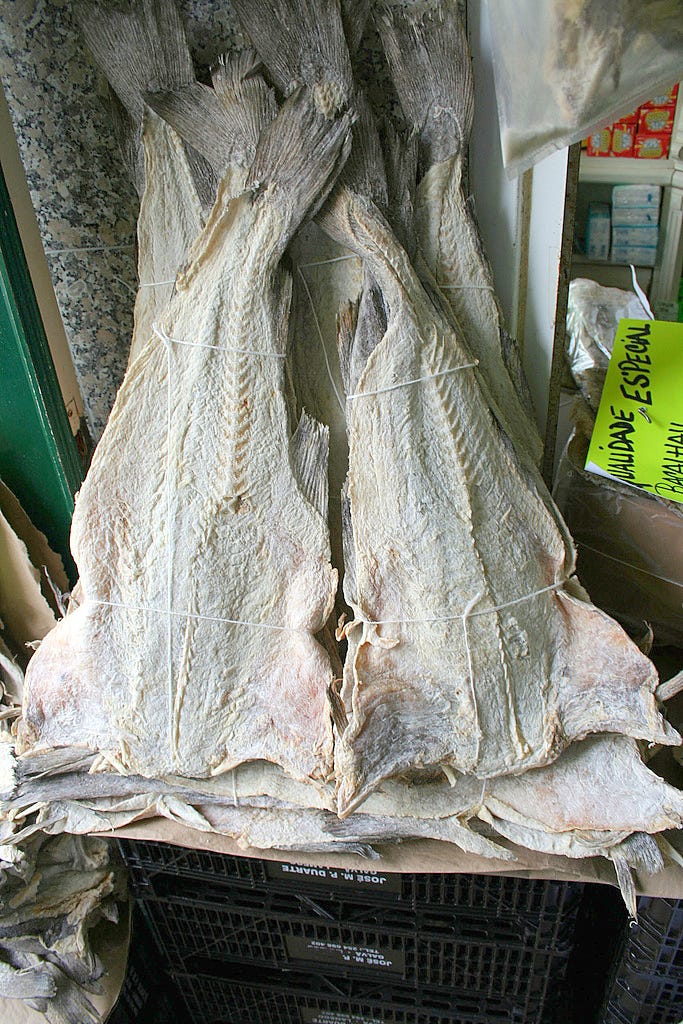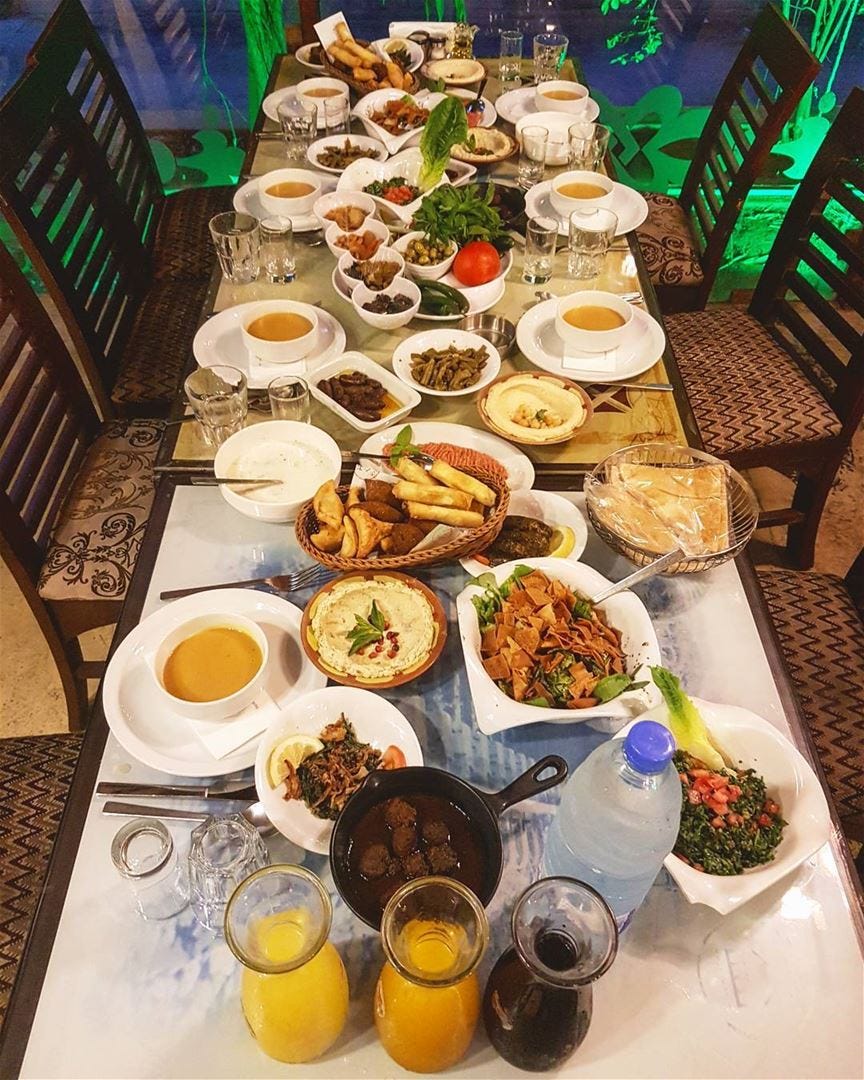A Blessing And A Curse
I gave a talk a few weeks ago alongside the presenter Robert Elms. We spoke about a lot of things; culture, people, religion, politics, tourism, money - all in relation to food (unsurprisingly). Robert and I, both Londoners, inevitably arrived at the point of how good the food in our city is, and how lucky we are to have such a variety cuisines as a result of a variety of people. We’re not the first people to have expressed these sentiments. It’s almost impossible to hear or read a description of eating in 21st century London that doesn’t start with the phrase ‘melting pot’. People aren’t here for the jellied eels.
We talked about how food in London is built around pockets of migration - Korean in New Malden, Punjabi in Southall, Caribbean in Brixton, Turkish in Green Lanes, each with its own fascinating story of diaspora and assimilation. Sure, in any town in the UK you might go to the local Indian or Thai restaurant, there might be a couple of kebab shops selling mystery meat, but the magic of this city is finding such a dense concentration of a people and their cuisine in one area. On a warm summer evening, head North West from Marble Arch along Edgeware Road and you’ll find an unbroken, mile long stretch of restaurants, cafes and grocery stores covering just about every cuisine in the Middle East. Whole families sit outside eating and drinking tea late into the night. For a moment, you forget you’re even in London, that’s pretty special.
We talked about how we’re spoiled for choice here, and at this point I said the first thing out loud that I’ve ever thought was worth writing down. So to quote myself “In London, you can choose where in the world you want to go for dinner, and get the tube there”. At this point Robert told me a story about being somewhere on the coast in Spain, talking with a distinguished older Spanish gentleman about food. He’d told him gleefully about how in London we have sushi, ramen, kebab, pizza, steak, tacos and noodles and that on any given day he could eat whatever he wanted, and a good version of it too. The Spanish man smiled, spread his arms and replied “that’s great, but we don’t need that, because we have this”.
I can imagine the same conversation Robert had in Spain taking place in lots of places. Paris, Rome, Chengdu, Bangkok, Beirut. Somehow, I can’t imagine it taking place anywhere in the UK, even my beloved London. And so now we arrive at the question that has been kicking around in my head ever since. Why not? Why are France, Italy and Spain so famous for their cuisine but the UK, Germany and Switzerland not? Perhaps it’s a question of setting. In my mind, Robert and the gentleman are wearing loose fitting linen suits, sipping cold vermouth and looking out over the Bay of Biscay as a cool breeze blows in off the water. When I picture the same conversation in London, I’m on a grotty corner of Soho that smells like old ham, watching the back of a bus disappear around the corner. But weather, despite being Britain’s favourite topic, doesn’t satisfy as an answer. Croatia runs parallel to Italy along the Adriatic Sea, it looks the same, it has a long sunny coastline, they grow the same things. Have you ever eaten Croatian food?
There’s an old joke that goes something like ‘heaven is where the police are British, the cooks French, the engineers German, the lovers Italian and it's all organised by the Swiss. Hell is where the chefs are British, the engineers French, the lovers Swiss, the police German and it's all organised by the Italians.’ This is quite a Eurocentric view of heaven. Some of us might have wanted Mexican or Vietnamese cooks or Japanese engineers or Lebanese lovers. Even constrained to Western Europe, the Spanish don’t get a mention, presumably they’re having a siesta (kidding!). Make what you will of those wide sweeping stereotypes. I’m going to unpack them and find some deeper meaning as a metaphor for food.
In many ways, being someones lover and cooking for them both come from the same place (the heart) and so in our joke, French and Italian feel interchangeable. Similar logic follows that engineers are the kind of pragmatically minded people that you might like to organise things for you, and so Swiss and German here also seem exchangeable. As the representative for Britain, I’m going to step out of the equation for a moment. At this point, our joke becomes neatly divisible in half, with France and Italy on one side, Switzerland and Germany on the other. Let’s add Britain to the Swiss/German side and, to balance the equation, Spain to the French/Italian side. This makes sense for many reasons; language/religion/culture.
Röstigraben
This split represents a mostly geographical, and certainly psychological division between the North and South of Western Europe. Switzerland, being somewhat in the middle of it all, actually has a word for this invisible line of demarcation between the French and Italian speaking South and West and the German speaking North and East - Röstigraben. The rösti line. Rösti, as in the tasty fried potato cakes, being symbolic of the German speaking part of the country. The Swiss French call it rideau de rösti ‘the rösti curtain’ (fortunately potato is more porous than iron).
My Dad, being from South of the rösti curtain, points out that you could extend that line either side of Switzerland and it pretty neatly divides Western Europe’s cultural North and South, starting in Dunkirk and ending up somewhere around Venice.
Northern France is the bone in the cartographer’s throat and the reason for my line being diagonal, much like Norfolk being further North than Birmingham, but still in the South of England. Go figure. This is interesting because it breaks this North-South dichotomy to some extent. Paris, with weather much closer to London than Rome or Madrid, has just as prolific a cafe culture and extensive a cuisine as anywhere in the Mediterranean.
This upsets the argument that it’s all a question of geography and climate, which was my initial conclusion when thinking about the division of European food cultures. In fact, France, Italy and Spain don't have the same climate at all. The Pyrenees and the Alps are freezing, Southern Spain is almost desert, North and and Northwest France has much the same oceanic weather as Britain. Italy is continental and green in the North and hot and dry in the South. We have 3 totally different climates and agricultures between the 3 countries, and these are all reflected in their respective cuisines. Bologna in winter is just as cold as the U.K, but the town squares are still full of people, sitting outside, eating and drinking and chatting. You just wear a big coat. Why don’t we do that?
A secondary argument towards climate and geography as the differentiating factor is access to produce. Simply put, the climate of the Mediterranean has a greater variety of produce and a longer growing season than Northern Europe. And, whilst Northern France and Italy are cool and green, they still have uninhibited access to that climate as they have Mediterranean coastlines. But this doesn’t work either. The cooking in Paris, Brittany, Bologna, Santander and Milan isn’t Mediterranean, it doesn't rely on that produce to be prolific and internationally famous.
A Brief History of Salt Cod
Let’s use cod and potatoes as a case study. Cod is a cold-water fish, native to the Atlantic (you don’t find it in the Mediterranean Sea, for example). As an early method of preservation, salting and drying cod enabled fisherman (from Portugal, the Basque Country of Spain and France, Brittany, Normandy, the West Country of England and Ireland) to transport it back from the Grand Banks, between Newfoundland and Greenland (where there are large reserves of cod) before the invention of refrigeration. The salt cod, a modestly priced and tasty source of protein, was then sold in Western Europe, where it became immensely popular, notably in Portugal, Spain, France and elsewhere in the Mediterranean. Salting was also an effective way for sailors to transport nutrient dense cod during long voyages to the New World during the Age of Discovery (16th Century). In this way, salt cod spread outside of the North Atlantic and Europe and became established in West African, Latin American and Caribbean cuisines.
In Spain, the consumption of salt cod is so prolific that it’s said there is no word in Spanish for unsalted cod. In Portugal, there are branches of the Academia do Bacalhau in several cities, with the Lisbon branch listing over 1000 recipes for preparing the stuff. In France, brandade traverses its way from the grand cuisines of Escoffier to the chalkboard menus of Paris bistros. Louis XV ate it at Versailles, but it’s also good for the lunchtime €12 prix fixe. In each case, the cod is prepared first by soaking in fresh water multiple times to remove the salt, then (more often than not) combined with potato in some way. At this point it can be layered and baked with onions, deep fried, pan fried, served with scrambled eggs, stuffed inside vegetables, whipped with oil, stewed, made into a casserole with vegetables, quenelled, mixed with chopped eggs and olives, served in cream, served with tomato sauce etc etc.
It’s made with the same cod and potatoes we have in England. The same fish, from the same place, brought back by fisherman from the West Country, who shared a language with the fisherman from Brittany (where you find dishes like ‘Moru Bretonne’ - Brittany style salt cod) and yet we don’t see it, don't eat it, don't have recipes for it, don’t even have a word for it. Why?
Bacalhau (salgado) (Portuguese), bacalao (salado) (Spanish), bacallau (salgado) (Galician), bakailao (Basque), bacallà (salat) (Catalan), μπακαλιάρος, bakaliáros (Greek), Klippfisch (German), morue salée/brandade (French), baccalà (Italian), bakalar (Croatian), bakkeljauw (Surinamese Dutch), bakaljaw (Maltese), makayabu (Central Africa), kapakala (Finnish) klipfisk (Danish) klippfisk/kabeljo (Swedish), stokvis/klipvis (Netherlandish Dutch), saltfiskur (Icelandic), bartolitius (Canadian), and saltfish (Caribbean). Middle English had a word for salt cod too, haberdine. We don’t anymore.
So it’s not a question simply of climate and geography, or that we don’t have the ingredients, or the same historic involvement in their procurement and trade. Our national dish is literally fried cod and potatoes. So close and yet so far! (but still so good…once or twice a year).
So what is it, that intangible divide between the food cultures of the North and South of Western Europe. Why can’t I have a little glass of beer with my lunch and why don’t people in the next village argue that their grandmother’s way of making that dish is the only way? What is that palpable divide between France and Germany or between Austria and Italy? Palpable it may be, but papal might be more apt.
Here we are, the crux. The grand reveal. My magnum opus!
The Latin Line
It’s all about God. Or more specifically, which particular flavour of God you go in for. How fancy your churches are, how much gold is on your robes, how many food-related religious practises you have. Here, my extended röstigraben once again comes into play, this time dividing Roman Catholic Europe from the rest. I will Christen it (!) the Latin Line.
So, this is my theory. While weather and ingredients do have a role to play, there is something more at work here. Religion. South of my line, a Catholic's relationship with virtue and sin remains between him, God and his confessor. North, in a Protestant culture, one must physically demonstrate virtue in order to have a good reputation with God and within the community. This austerity is reflected in the churches, the clothing and, you guessed it, the food. Here, frugality, plainness and simplicity are used as a means of reaching the higher self.
I’d like to turn back to Switzerland for a moment, to prove a point. Sandwiched as it is between France and Italy, two of the most famous food cultures on the planet, and sharing language with them both, you’d expect this small, affluent country to have pretty incredible food. Maybe a bœuf bourguignon on Monday, lasagne on Tuesday, a fondue on Wednesday. It doesn’t. Look, Swiss food isn’t the worst in the world, you get pretty good produce and nice cheese, but there’s a reason it’s pretty much unknown and unseen. How is that possible, considering where it is? Well you see historically, Switzerland wasn’t just protestant, they took it a step further. Calvinism, the variety of protestantism born in Geneva, makes the regular kind look positively hedonistic. There’s no place here for aperitivo hour. Turns out it’s hard to prostrate oneself before God with a belly full of fois gras washed down with a crisp white. Who knew? The result of this is that for half a millennium, what should’ve been a melting pot of Franco-Italian culinary delights, was not.
Case #2 is the Strait of Dover. On one side, we have Catholic France and arguably the most famous cuisine on earth, and on the other, just 26 miles away, Protestant Britain with the cuisine arguably the most famous for being terrible. And so again I say that this is not simply a question of climate, geography and ingredients. It runs deep in our respective cultures and, maybe, this Catholic/Protestant divide is part of the root cause. After all, religion establishes cultural norms and habits which extend well beyond direct theological practises and form part of the makeup of everyday life, whether you’re a believer or not. If you’ve ever been to the Middle East during Ramadan, Spain during La Semana Santa, or India at Diwali you’ll know what I mean. Whatever you call your God, even if you don’t have one at all, you’re still present and a part of it.
This is me trying to figure out why as a young chef in London I was trained in French and Italian cookery and not English and Austrian cooking. It isn’t a neat argument. It’s not an all encapsulating, definitive reason for Europe’s food division, but it does feel too significant to be pure coincidence. It goes some way to explaining the hard divide we find in the popularity and appreciation of the cuisines either side of this invisible Northeast - Southwest line. I’d love to know what you think. Does this idea have legs, do you have another theory?
And it’s not all bad news. A deep rooted, long established native cuisine, with all of its stubbornness and rules, is not fertile ground for either outside influence or inside innovation. From the 80’s until about 10 years ago, French food stagnated like a cold puddle of jus. Meanwhile, London exploded. This is the great silver lining of not being entrenched within the confines of a traditional food culture. The combination of immigration, affluence and appreciation of foreign food has made London one of the most exciting cities in Europe to eat in. From modern Turkish to West African infused fine dining to just a really good bowl of noodles, we’ve got it all. So yes, it’s hard to buy a good tomato here, and when you do find one it’s eye-wateringly expensive. And no, you can’t pull over on the side of the road and expect the first little cafe you walk into to be half decent. But when I walk North West from Marble Arch on a warm summer evening, the air thick with shisha smoke and that familiar endorphin rush as the smell of hot lamb fat hitting charcoal reaches my nostrils, it does feel like a blessing, not a curse.
An important note - I’ve talked a few times here about French and Italian food being world-famous and beloved. This is true, but make no mistake, I think it’s a huge shame that so many deserving cuisines from all over the world have been criminally overlooked, misjudged and treated with snobbery and racism in favour of these two. Great cuisines though they are, my purpose here it not to reinforce the pedestal on which they are placed, merely to find out how they got there.
One more thing…
I have some exciting news! Firstly, thank you for being patient with me while this newsletter takes shape and find its form. Secondly, I’m leaving London to spend May/June/July travelling around France, Spain, Portugal and Italy to collect and document the traditional cooking of those countries in a new series ‘A Man With A Pan’.
Alongside a bag of clothes, a camera and my trusty all-purpose pan, this newsletter will come with me along the way. Each week, I’m aiming to film, edit and post a video of a dish, taught to me by someone wherever I am (this will be over on my instagram) and along with that, write about who I meet, what I find and what I eat each week, right here. I can’t wait to share it with you all.







Loved this piece. Your idea sounds pretty on point...I feel like my family embodies your rösti line...my husband was born in Germany & my family origin is Italian. It’s fantastic being exposed to both cuisines but they are starkly different. “The German Cookbook” is my bible for that cuisine, & there is a passage I recall in there about a certain king & queen who made it fashionable to be puritanical, as you say. It’s like north of the line the food restraint is meant to show devotion to god, & south of the line is like, the food, the love, the cooking IS god. So interesting & thought provoking, thank you. I will keenly look out for your new series.
Babette's Feast?